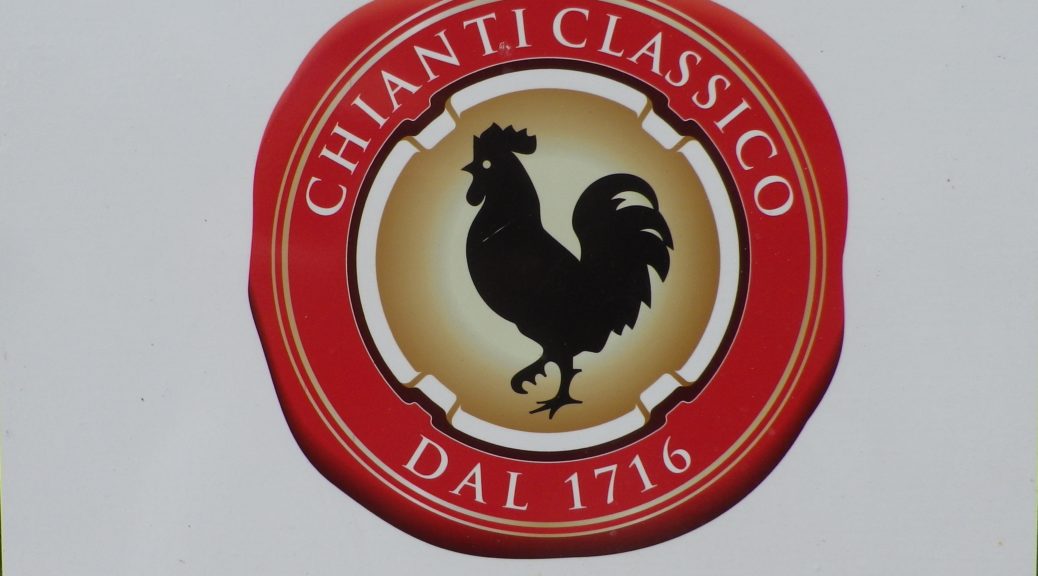What I Learned (Varietals)
The classic heart of Tuscany is Chianti, between Florence and Siena. And the classic heart of Chianti lies around the towns of Radda in Chianti, Castellina in Chianti, and Gaiole in Chianti. These small towns formed the original Lega di Chianti (an economic and defensive alliance). These towns have always been found in wine district of Chianti (be it the original designation in 1716, or the latest one in 1996). Nowadays the Black Rooster of Florence serves as a symbol of their Chianti Classico wines.
The territory in Chianti is not exactly homogeneous. Different elevations, very different soils, and different exposures naturally exist in this hilly terrain. Hence, the flavors in the juice can vary tremendously, resulting in varied and exciting Chianti DOC wines.
Unlike the landscape though, there is not a lot of variety when it comes to grape varietals in Chianti. Sangiovese rules here, not surprisingly since every bottle must contain at least 80% Sangiovese. This red varietal is capable of producing bold and powerful wines. It has been harvested here for wine for centuries now. (Previously, white varietals were allowed in the Chianti blends, but this is no longer the case.)
Other red varietals that are well established in the area are Colorino, Ciliegiolo, and Canaiolo, up to twenty percent of which may be added to the Chianti DOC wines. Recently, the estates have begun to plant some of the “international” red varietals, such as Merlot and Cabernet Sauvignon, as well as white varietals such as Chardonnay and Trebbiano.
What I Tasted
2014 Ripa delle Mandorle, IGT Toscana, Castel Vicchiomaggio: A dry white wine (90 percent Trebbiano, 10 percent Chardonnay) with light gold color; nose of white flowers and honey, and floral and peach flavors; very mild acidity.
2013 Ripa delle Mandorle, IGT Toscana, Castel Vicchiomaggio: A dry red wine (75 percent Sangiovese and 25 percent Cabernet Sauvignon) with medium ruby-red color; hints of smoke and rubber on the nose, and cherry and smoke flavors; very mild tannins and mildly acidic.
2011 Chianti Classico Riserva, Ser Lapo, DOCG, Mazzei: A dry red wine with medium light garnet color; a fruity, cherry nose, with cherry, vanilla and smoky notes; high tannins.
2011 Ripa delle More, IGT Toscana, Castel Vicchiomaggio: A dry red wine (50 percent Sangiovese, 30 percent Cabernet Sauvignon, 20 percent Merlot) and very dark red color, nose of cherry and oak, with cherry and oak flavors; medium tannins.
2010 Chianti Classico Riserva, DOCG, Lamole di Lamole: A dry red wine (100 percent Sangiovese), with medium plus ruby-red color; Vegetal nose, and red berry flavors; Strong tannins.
2010 Chianti Classico Riserva Lodolaio, DOCG, Castelvecchi: A dry red wine (100% Sangiovese) with a medium ruby-red color; Nose of berry and the same for flavor. Medium tannins.
2010 Chianti Classico Riserva, Silvio Chiostri, Fattoria Vegi; A dry red wine (80% Sangiovese, the balance being Canaiolo and Ciliegiolo) with medium ruby-red color; Nose of spice and flavors of cherry and oak; Medium tannins.
2008 Chianti Classico Riserva, DOCG, Azienda Agricola La Miranda: A dry red wine (95% Sangiovese, 5% Colorino) with medium ruby-red color; Nose of vanilla and spice, flavors of spice and red berries; Powerful tannins.
